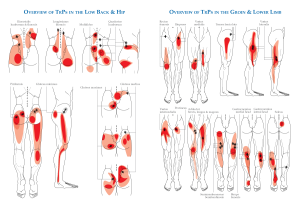How Millennials Can Manage Back Pain

Category: | Author:
Back pain is oftentimes viewed as a condition that affects senior citizens and older adults, but the fact of the matter is that nobody is immune from back issues. In fact, a growing number of millennials are reporting to their primary care physician or a spine specialist with back pain. Why are millennials reporting more back pain, and what can be done to treat and prevent issues going forward? We take a look at how millennials can manage back pain in today’s blog.
What’s Driving Back Problems In Millennials?
Millennials were born in the early 1980s through the mid 1990s, meaning they are anywhere from 28-43 years old right now. Again, this probably isn’t the age range we think of when we hear that someone is dealing with back pain, but there are plenty of reasons why this group may be battling back discomfort. Here’s a look at some of the reasons why millennials may be dealing with back pain, and what they can do to care for their spine to keep it healthy as they age:
- Athletics – You’re likely still pretty active in your late twenties, thirties and early forties, but there’s a good chance that your body isn’t quite as strong as it used to be. It takes a little extra work to build muscle, burn fat and get loose prior to athletic activity, and if you aren’t mindful of the extra care your body needs in order to thrive during athletic activity, injuries can develop. We want you to stay active, as this will help your body remain strong as you age, but know that you may need to pay more attention to how you warm up, cool down or vary your exercise routine in order to keep your spine healthy.
- Technology – Millennials grew up as major advancements in technology were being made. They caught the tail end of the rise of the internet and the advent of smartphones, and many of them have embraced these technologies. However, prolonged smartphone, tablet or laptop use can be incredibly hard on the neck and lower back, so it’s important to be mindful when using these devices. Limit your time on tech devices, strive to have ideal posture when seated at a desk, and do some gentle stretches after using a laptop or smartphone to relieve some of the muscle tension that has developed in your neck.
- Work – The rise of the internet also means that many Millennials work at a desk or have an office job. Sitting for eight or more hours a day may not seem all that hard on your body, but this prolonged inactivity can certainly cause problems for your spine. If you’re stuck in a seated position for 40 hours a week, find ways to take some of this stress off your spine. Invest in a sit-to-stand workstation, take a phone call while standing or simply strive to be more active when you’re not in the office. Inactivity can speed up natural spinal degeneration, so if activity is limited at your job, make sure you physically challenge your spine when you’re not on the clock.
- Exercise – Exercise could be the cause of your spinal discomfort, but it’s also the single best thing you can do to keep your spine strong and healthy as you age. Regular exercise is very important at all stages of life, but it can fall by the wayside during your thirties and forties as your family and career take up more of your free time. Make it a point to carve out time to exercise even as life gets a little busier, and you’ll be helping your spine age gracefully while also reducing your likelihood of injury.
No matter your age, if you’re dealing with back pain, it’s imperative that you take proactive steps to get it under control. Untreated back pain is more likely to progress into more severe spinal discomfort if you don’t do anything, so don’t assume that it will go away on your own. If you’re younger, odds are your spine will respond better to treatment, so there’s a pretty good chance that proactive treatment will yield effective results. Let us help find that treatment for you!
For more information, or for help with a different spinal issue, reach out to the team at The Midwest Spine & Brain Institute today at (651) 430-3800.
Related




